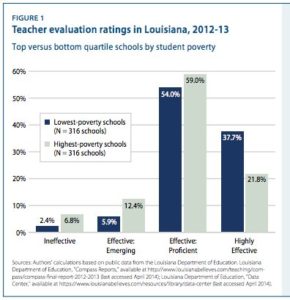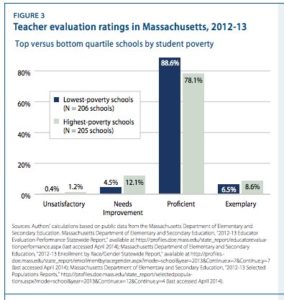A new study from the Center for American Progress revealed that low-income, minority students tend to have less effective teachers.
Another recent study from the Annie E. Casey Foundation revealed there was a pattern of disadvantage for Black children, and this report may add more insight as to why that advantage gap exists.
In addition to being assigned less experienced teachers, it turns out that schools in low-income areas tend to staff more ineffective teachers than schools in higher-income areas.
Race To The Top funding has encouraged schools to adopt new teacher evaluations systems.
In Louisiana and Massachusetts these evaluations have been made public and have drawn attention to the drastic difference in teacher quality that exists in high-poverty schools.
Louisiana public schools rank teachers as being “ineffective,” “effective-emerging,” “effective-proficient,” or “highly effective.”

As for teachers with an “ineffective” rating, 6.8 percent of teachers in high-poverty schools were found to be ineffective and only 2.4 percent of teachers in low-poverty schools were given the same rating.
Schools in Massachusetts rated their teachers as “unsatisfactory,” “needs improvement,” “proficient,” or “exemplary.”
The results of their teacher evaluation ratings were just as troubling with students in high-poverty schools were much more likely to have unsatisfactory teachers or teachers who “need improvement.”
The study also looked into possible causes for the teacher ratings and found that many schools were given flexibility from No Child Left Behind requirements.

“Regardless of how it is measured, teacher quality is not distributed equitably across schools and districts,” the report stated. “Poor students and students of color are less likely to get well-qualified of high-value teachers than students from higher-income families or students who are white.”
The associate director for education research at American Progress, Jenny DeMonte, said one thing has been made very clear by the report.
“We’ve got some work to do,” DeMonte said.
She added that effective teachers are key to a child’s success in the future and the report makes it clear that low income, minority students may continue to be placed at a disadvantage if serious changes are not put in place soon.


